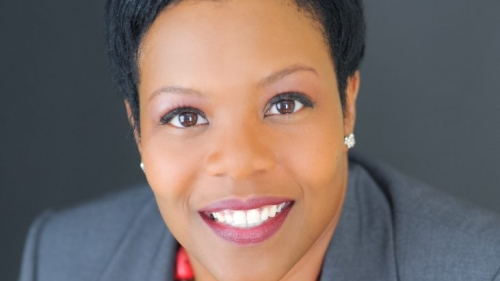
Kaya Henderson
NYU Steinhardt kicked off its Dean’s Distinguished Lecture Series with ‘What Will It Take?’, a talk by Kaya Henderson.
Best known for the her role as former chancellor of the Washington, D.C. public schools, Henderson has worked for three decades in schools, school districts, and international communities. Her tenure at the DC schools from 2010 – 2016 was marked by enrollment growth, an increase in graduation rates, improvements in student satisfaction and teacher retention, increases in AP participation and pass rates, and the greatest growth of any urban district on the National Assessment of Education Progress (NAEP) over years. She currently leads the Global Learning Lab for Community Impact at Teach for All.
After the lecture, we asked Henderson what experience has taught her about education.
You’ve spent 30 years working in schools in the US and abroad, what have you learned about education?
It’s really hard to try to reduce all that I’ve learned in nearly 30 years in education into a few neat bullet points! As you can imagine, I’ve learned a lot about people, systems, communities, politics, policies, learning, and more. For the purpose of this question, I’ll share a few ideas that currently are influencing how I’m thinking about education:
The current education system isn’t broken. It’s working exactly as it was designed — to sort people into those for whom it will and won’t provide further opportunities.
If we want an education system that delivers on the promise of equipping all students with the skills and experiences necessary to lead whatever lives they imagine, our current systems aren’t the answer.
Also, we need to think differently about how people learn. Learning is dynamic, it happens in all places and at all times. Learning usually happens with people who love and care about students, and builds on deep relationships. Learning generates joy and demands rigor. When we can create a set of experiences for students that operate according to those conditions — allow students to demonstrate mastery of what they have learned, and provide students and families with the opportunity to craft their own learning pathways — we’ll be closer to the kind of education system that we aspire to.
How important is cross-sectoral leadership in the educational sector; what part does it play in student success?
I often say that schools are the stage on which all of society’s challenges perform. But just because all issues show up in schools doesn’t mean that schools are the best place to address them. Schools aren’t resourced to do this work, nor do they have the capacity to deal with all of things affecting students. In fact, part of the reason why schools can’t be expert at teaching and learning is because they are responsible for so many things beyond teaching and learning. Life is intersectional, and so we need an intersectional, cross-sector approach to how we support students and families.
I’ve come to believe that four particular issues, education, housing, economic security, and health, are inextricably linked, and must be tackled together in order to help students and families succeed. While there are many examples of individuals succeeding in one area while facing challenges in others…to achieve the kind of transformational, long-term, life results that we seek for our most vulnerable students, we have to take a more integrated approach to supporting the whole student. This requires leadership across multiple sectors, working in a coordinated effort to meet children’s needs.
Was there an experience in your work with schools, school districts, and communities that shaped your current thinking?
One of my most important takeaways from my time leading DC public schools is the understanding that the best solution to a problem comes from a true partnership with the people most affected by the problem you are trying to solve.
While I was chancellor, I had two strong instincts. The first was that in order to be successful, the assets in the communities we serve needed to be harnessed. My second instinct was that schools belong to the community; I could not make a decision about a school without real partnership with the community.
My experience bore those instincts out. When we put a problem in front of our community members, we understood that we had some expertise and so did they. When we combined our knowledge and ideas, we came to the best solutions.
I have found that when we shared information, power, and decision-making with our community, we got to more exciting, more effective, and more sustainable solutions.
I am committed to ensuring those ideas are in all of the work I do. I preach these ideas as gospel. I share the DC model with people, and tell them what it looks like when you really partner with the community you are serving. Ultimately, success hinges on strong, authentic relationships, which take time and trust to build.
If you could create a “dream school,” what would it look like?
I don’t have a “dream school” in my head. I have some principles that I’d consider to be important in what a new way might look like, but I would want to dream with a group of people, including students. I think by working together with students and families, educators, and other key stakeholders, we might be able to come up with something much better designed to help kids learn and lead.
